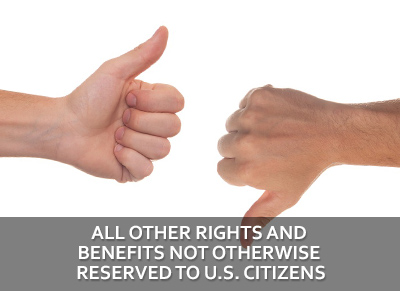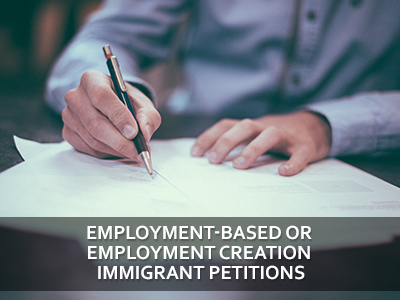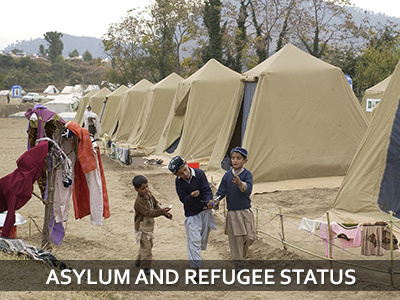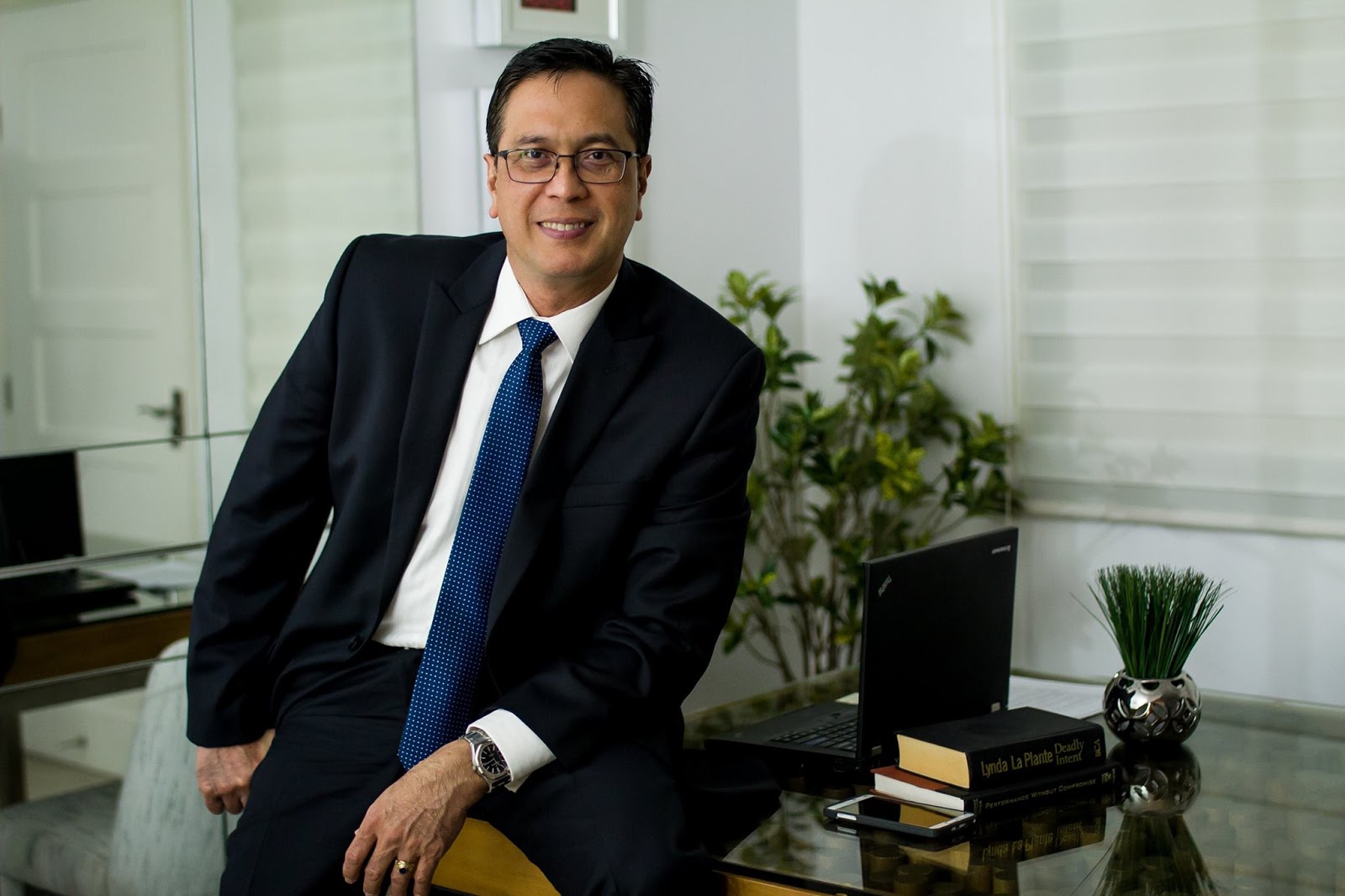GREEN CARD PROCESS IN SIMPLE TERMS
It is an evidence or proof of your status as a Lawful Permanent Resident (LPR) in the U.S. issued by the United States Citizenship and Immigration Services (USCIS). An LPR retains the citizenship of his/her home country but is allowed to reside and take employment in the U.S. on a permanent basis. Once the LPR successfully proves continuous residence of five (5) years, LPR can become a Naturalized U.S. Citizen. The five (5) year residence requirement is reduced to three (3) for those who are married to U.S. Citizens.
Green Card holders can live in the U.S. on a permanent basis. That is, to live in the U.S. as long as they want and for the rest of their lives. Depending on how Green Card is obtained, it usually expires either in ten (10) years or two (2) years [Conditional Green Cards issued to: 1) those who became LPR based on marriage to a U.S. citizen, when the marriage occurred less than two years before the green-card approval; and 2) those who received LPR status under the EB-5 “investor’s visa” and “employment creation” program.
In the case of holders of 2-year Conditional Green Card, there are certain steps to be performed to “remove the conditions” so that the holders will be entitled to additional ten (10) year Green Card, otherwise, they shall be subject to removal proceedings.
In regard to holders of a 10-year full pledged Green Card, they do not lose their LPR status despite the expiration of their Green Card because as already explained above, it is merely a proof of LPR status. The expired 10-year Green Card holders, however, may encounter some problems when they try to re-enter the U.S., or when they try getting a job, buying a house, and getting a driver’s license. Thus, they are encouraged to renew their Green Card before expiration;

Green Card holders can be employed without showing other proof of authorization from the USCIS other than an unexpired Green Card itself. They are entitled to all kinds of benefits of employment. There are, however, certain Federal position which only U.S. Citizens can apply for. They can also engage in business or any related activities without applying for an investor’s visa (E2 Visa) or any form of authorization;

Green Card Holders can study in the U.S. from Kindergarten to College as incidental to their LPR status and enjoy the benefits or rates of in-state resident

Green Card holders can sponsor family members such as the Spouse, Child (below 21 years old), unmarried sons and daughters (21 years old and above) under the family-based preference immigrant visa category. Only U.S. Citizens can petition for their parents (provided U.S. Citizen is above 21 years), married sons/daughters and their families and siblings and their respective families; and

As legal resident of the U.S., an LPR enjoys all the rights and benefits except those reserved exclusively to U.S. Citizens such as employment in most Federal positions, voting rights, can stay outside of the U.S. without time restrictions, can petition parents, siblings and married sons/daughters, certain grants and scholarships, cannot be deported despite commission of deportable crimes and etc.

These are initiated by either a U.S. Citizen or a Green Card holder in favor of certain family members. There are also certain persons who can “self-petition” as a result of death of the U.S. Citizen spouse and those who are battered spouses, parents and children under the Violence Against Women Act (VAWA);

U.S. Employers (with ability to pay) sponsors qualified and skilled foreign workers for certain types of work or field of expertise (outstanding professors and researches, multinational managers or executives under EB 1; those with advanced degree or with exceptional ability; professionals and unskilled workers). There are also instances when a person can “self-petition” for extraordinary ability and under the National Interest Waiver program. Special immigrants, such as religious workers who work for Religious Organization can also obtain a Green Card and those who qualify to get a Green Card through investment of very substantial amounts ($500K at designated underemployed areas; or $1Million) in the U.S. One of the main purposes of the latter Green Card process is to generate jobs in the U.S. through fresh investment.

If admitted as a refugee or their qualifying spouse or child of a refugee must apply for LPR status after one (1) year from entry. If granted asylum or are a spouse or child of an asylee, may apply for LPR status after one (1) year from grant of asylum; and

The Diversity Immigrant Visa Program (DV Program) is administered by the Department of State (DOS) which grants up to 50,000 LPR status available annually, to be drawn from random selection who are from countries with low rates of immigration to the United States. Countries with high migration rates such as China, India, Mexico and Philippines are automatically disqualified. Other countries are disqualified for national security or other reasons. Most lottery winners reside outside the United States and can apply for LPR through consular process with the DOS; while those who are legal residents in the U.S. can apply for adjustment of status through the USCIS.

The most common types of Green Card processing are the Family-Based Immigrant Petitions and Employment-Based Immigrant Petitions. We shall then confine our discussion to these types of Green Card processing. As for Employment-Based Petitions, we will discuss the more commonly availed ones and especially leave Investor and Job Creation Visa under EB 5 Visa Category probably in another discussion due to its very complicated and strict requirements.

Green Card applicants in Family-Based and Employment-Based Immigrant Petitions, who are residents of the U.S. at the time of filing, go through the (AOS) process. The general rule, however, is that AOS process can only be employed if the visa is available or if the priority date in the preference visa categories is already current (based on the Priority Date of the DOS Visa Bulletin) and that the applicant must not be out of status or is maintaining legal status at the time of application. There are a few exceptions to this rule such as Section 245 (i), Section 245 (k) of the INA, self-petitioners under the VAWA and of course, those filed by “immediate relatives” such as U.S. Citizen filing a petition for a spouse, a child (below 21 years old) or a parent provided the U.S. Citizen is above 21 years old at the time of filing. Let us go now to the simplest scenario for AOS and Consular Processing, thus:
- In regard to Family-Based Petitions a simple USCIS Form I-130 is filed together with supporting documents; while Employment-Based Petitions often require a Labor Certification with the Department of Labor (DOL) for the petitioner-employer to prove that required recruitment processes were done and U.S. workers were not unjustly deprived of the position in favor of the skilled foreign worker. There are certain occupations that are pre-certified or which belong to the “Schedule A” category such as Registered Nurse and Physical Therapists, as the DOL has determined that there is not enough U.S. workers are able, willing qualified and available to perform such work. There are also others with extraordinary ability or qualify under the National Interest Waiver, those with exceptional abilities in the science or arts that do not have to go through Labor Certification simply because people who belong to this category are specially gifted, America wants them to live in the U.S. and contribute to the development of the U.S. economy. If the position is pre-certified or the Labor Certification is approved, it will serve as a ticket to filing the USCIS Form I-140 and its supporting documents;
- Concurrently filed with the USCIS Forms I-130 and I-140, are the applications for AOS, Employment Authorization Document (USCIS Form I-765 or EAD) and sometimes, Travel Document (USCIS I-131) by the Applicant if there is an intention to leave the U.S. while the petition is still pending lest it be considered abandoned;
- In about a month, the USCIS will issue biometric schedule notice wherein the applicant’s fingerprint and photographs will be taken at a USCIS Support Center. These information and data will then be forwarded to the Department of Justice (DOJ) and other appropriate government agencies for background checking.
- Within ninety (90) days from date of concurrent filing, the USCIS will issue the EAD. Once issued, the applicant can go straight to the nearest Social Security Administration (SAA) office and apply for a Social Security number. The SS card will be delivered within ninety (90) days. The applicant can then work anywhere in the U.S.
- USCIS schedules Adjustment Interviews usually for Marriage-Based Immigrant Petitions to determine the legitimacy of the marriage between the U.S. Citizen Petitioner and the foreign national spouse. Normally, there is no interview conducted for Employment-Based Petitions because the information provided can easily be verified based on the documents submitted. On the latter case, Green Card is simply sent by mail by the USCIS to the beneficiary or applicant;
- At the adjustment interview for marriage-based immigrant petitions, the couple will be subjected to often lengthy and grueling interview wherein the USCIS Adjudicators probe into the minds and actions of the couple to determine if there is marriage fraud involved (Please check out our blog, US Immigration Interview Part 1: Practical Tips for Adjustment Interview (Marriage-Based or Spousal Petitions to learn more about this topic!). Applications maybe approved outright, deferred for further evaluation or the couple required to submit more evidence to prove the legitimacy of the marriage;
Consular processing is usually done at the U.S. Embassy or Consulate Offices located at the applicant’s home country through the National Visa Center (NV). The NVC is under the auspices of the DOS that receives all approved immigrant petitions forwarded by the USCIS and processes them at the proper time or when the priority date becomes current based on the DOS Visa Bulletin. There are usually backlogs for petitions that are under the preference visa categories such as the F1 (U.S. Citizen petitions a single adult son/daughter), F2a (Green Card Holder petitions a spouse or child), F2b (Green Card Holder petitions an adult son/daughter), F3 (U.S. Citizen petitions a married son/daughter and family members) and F4 (U.S. Citizen petitions sibling and family members). There is no backlog for U.S. Citizen who petitions “immediate relatives” (spouse, child and parents of U.S. Citizen) because visa is immediately available but only processing delay that can take about 9 to 14 months. Hereunder is the usual consular processing steps to expect:
- USCIS Form I-130 (Family-Based) or USCIS I-140 (Employment-Based) is filed with the USCIS as already explained above;
- Once, the USCIS approves the petition, it will forward the whole record to the NVC within two weeks;
- If the priority date is not yet current, the NVC will send a letter (with the new case reference number) to the petitioner and legal representative that the record of the case has been forwarded to the NVC but the priority date is not yet current and will advise the petitioner and applicant of further instructions. If the priority is immediately available, about to be current or is already current , the petitioner will receive the Affidavit of Support Fee Bill and the Immigrant Visa Application Processing Fee Bill;
- Once the Affidavit of Support Fee Bill and Immigrant Visa Application Processing Fee Bill are paid, NVC will issue Document Cover Sheets which should be submitted to the NVC and placed on top of the following: a) USCIS Form I-864, Affidavit of Support (and supporting documents and that of Joint Sponsor’s Affidavit of Support if petitioner’s income is not sufficient; and b) the Civil Documents (electronically filed DS-260, copies of unexpired passports, birth certificates, marriage certificates, Police Reports, Certificates of No-Marriage and etc.);
- NVC reviews the submitted documents and within 60 to 90 days, it will forward the whole record to the designated U.S. Embassy or Consulate Office;
- NVC will also send out email and letter notices to the petitioner and applicant advising them of the scheduled interview and other instructions on what steps to be taken. At this juncture, it would be wise to visit the website of the U.S. Embassy or Consulate Office concerned because each post has a different procedure and registration requirements before making any appointment for Medical Examination and Interview. At least two weeks before the scheduled interview, the required Medical Examination at the a designated medical clinic and the gathering of all original civil documents must be completed;
- Visa applicant (and family members, if applicable) will be interviewed by the Consular Officer on the scheduled date (You may also read our blog, US Immigration Interview Part 2: Practical Tips for US Visa Interview at the Consular Office. The focus of blog is more for Tourist Visa but you can use those tips also for Immigrant Visa Interviews!);
- If the visa application is approved, the applicant will receive a sealed Immigrant Packet from the US Embassy or U.S. Consulate Office together with the applicant’s passport with the Immigrant Visa on it. You need to pay also the Immigrant Fee (there is an instruction for this) at the USCIS website so that your Green Card will be sent to you at the given address in the U.S. Applicant by now is allowed to board the plane to the U.S.
Please take note that the Applicant is not considered a Green Card Holder until he steps into the U.S. soil and properly inspected at the Port of Entry (POE). The applicant is expected to hand over the sealed Immigrant Packet to the POE Officer in the U.S. Note also, that your local government might require you to undergo certain seminars or orientations before you are allowed to migrate to the U.S.
The foregoing Green Card process envisions very simple scenarios. We have encountered countless complications from the USCIS level all the way to the U.S. Embassy or Consulate offices due to changes in internal policies of the offices concerned or for some reasons beyond our control. We have helped countless clients successfully navigate through the process despite all those complications. Consular Processing appears to be simple and you may hear anecdotes of success even without legal representation. Always remember though that your personal information and circumstances are not exactly the same and your case might be decided differently. When complications set in, and if you adamantly attempt to pursue your case without proper legal representation, you might be opening a can of worms and eventually find your case denied. Such desperate situation would mean costly consequences not to mention the consequent delay. With the current stricter trend on consular processing, we strongly recommend you engage the services of an experienced, compassionate and honest immigration attorney who will not only help you every step of the way but will guide you even up to the interview stage. Good luck and hope to see you here in America!
I know US Immigration Laws may be very hard to understand and maybe you got confused after reading this article; that you demand immediate answers. So I’m giving you a chance to directly talk to a US Immigration Lawyer, California. I encourage you to inquire from our free consultation page here -> US Immigration Services.
If you’re looking for US Immigration Services, Ponferrada Law Offices – attorneyhelpsyou.com offers excellent, quick and quality legal services with fast communication at the least possible cost.














